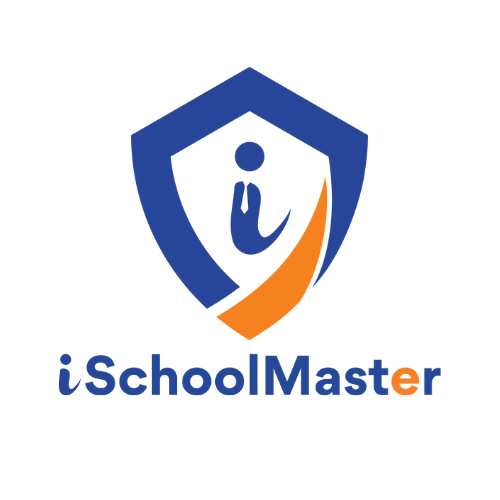Education is no longer what it used to be. Digital technologies are now at the center of education and learning, making the classroom experience more exciting for both students and teachers. Let's discuss the fast-changing environment and previous technologies that are going all the way to shape the future of LMS.
What are Library Management Systems?
LMS or library management system creates ease while freeing a librarian from functions of organization, cataloging, and management of library products. These resources cut across different aspects such as books, specialized journals, types of audio-visual materials, and many other things that can be found in a library or bookstore.
LMS's main aim is to lessen the workflow, as it allows for the librarians to implement the functioning of the collection effectively and track the inventories easily giving the patrons necessary resource access.
Major Aspects of a Library Management System
Modern library management systems have been developed to incorporate sophisticated functions like artificial intelligence, cloud-based storage, RFID technology, and data analytics, which is a great improvement. These systems play an important role in keeping libraries operating smoothly so that the information is well-organized and readily available to users.
- Cataloging: LMS helps librarians to accurately and consistently catalog and organize library materials. Every product carries a special identifier and metadata which makes them easy to locate and recall.
- Circulation Management: LMS provides a one-stop shop for lending and borrowing, which helps in inventory tracking, due date management, and fines handling.
- User Management: LMS stores records of library patrons in detail which consist of their borrowing history, preferences, and contact information. This is how they can personalize services to the users and track their reading habits.
- Search and Discovery: Users are positively affected by the fact that they can search for resources according to different criteria, such as author, title, subject or keywords. As the advanced search options make it easy to find materials within the library's collection, the discoverability of materials is improved.
- Automation: LMS automates the usual tasks like sending reminders for overdue books, generating reports, and updating the catalog with new items.
- Integration: Modern LMS systems often come with the capability to connect seamlessly with other systems, e.g., Learning Management Systems (LMS) in educational institutions, and this guarantees the smooth flow of information between the library and academic departments.
- Accessibility: LMS provides a user-friendly interface for librarians and patrons where they can log in, search for books, and reserve titles. For example, the mobile option allows users to check the library catalog and manage their account from anywhere and anytime.
- Security and Privacy: LMS guarantees the security of personal information with the use of access controls and authentication mechanisms to protect it from unauthorized access.
New Trends in Library Management Systems
Let's learn about the emerging trends in Library Management Systems:
- Cloud-Based Solutions: The LMS has a solid cloud direction. The Cloud-based systems facilitate schools to keep and use data in the cloud, which eliminates physical infrastructure as well as allows accessing information anywhere in the world.
- Mobile Integration: Since mobile has become the quintessential device, library management systems now adhere to mobile accessibility. It enables both teachers and students to use the library database to determine book availability and to even borrow books or reserve them using their mobile devices, thus improving accessibility and efficiency.
- Data Analytics for Decision Making: The analytical data of an LMS which is equipped with tools provides instructors with knowledge of the reading patterns of students. Students' needs and interests can be better catered for by data making the job of school administrators and teachers easier as they can now make data-driven decisions on how to administer the school library.
- RFID Technology: The library is becoming digitalized with the use of RFID which is the new technology in library automation. RFID tags on books significantly decrease the time for checkout and return by making the process more swift and reliable.
- User-Friendly Interfaces: Next-generation LMS will focus on the user experience. They should have user-friendly interfaces, which allow teachers and students to navigate and search for resources easily and manage checkouts without difficulties.
Technological Availability in Library Management
- Artificial Intelligence (AI): With the virtual assistant, you will be able to imagine the scenario in the library. AI cannot only perform daily tasks such as sending overdue book notifications or providing book recommendations based on a student's liking but also save time and improve the quality of the library service.
- Blockchain for Security: Keeping security up to date is a key issue in the management of personal information libraries. Blockchain technology can be used to guarantee the safety and integrity of users' data which will be hard to hack or modify in any way, thus making a transparent, safe, and tamper-proof system.
- Integration with Learning Management Systems (LMS): Future LMS will interoperate with a school's ICT environment and provide direct links between the library and the school's curriculum. They will therefore facilitate a more integrated and interrelated educational process.
- Virtual and Augmented Reality (VR/AR): To add a taste of the virtual world into the library, the learning management systems (LMS) must be augmented with VR and AR technologies. This, consequently, elevates the overall learning experience. Students may experience historical events through augmented reality books or VR tours to distant places and find learning more alive and informative.
Challenges and Solutions
If the future of the library management system is very promising; schools could face some problems during the transition. The resistance of change, the budget constraints, and the requirement for staff training to get used to the new technologies are not uncommon barriers.
To this effect, the school management should allot a budget allocation for the training of their staff and ensure that the training is very comprehensive. Programmed launch and testing of upcoming technologies, while involving eager teachers, helps to soften the resistance and finish the transition seamlessly.
Conclusion
The management of library systems in Indian schools is characterized by innovative solutions that best fit the unique needs of the big cities and the small towns of tier-one and tier-two. Implementation of cloud platforms, mobile technology, and innovative technology such as AI, RFID, and blockchain not only makes library operations efficient but also provides an effective educational environment to the students.
To ensure the relevance of schools in the current educational system, school owners, principals, and teachers must be aware of the latest trends and be ready to introduce the transformative and productive nature of technology. Through this, they can establish an education system that embraces the future and shapes learners into passionate life-long learners.

